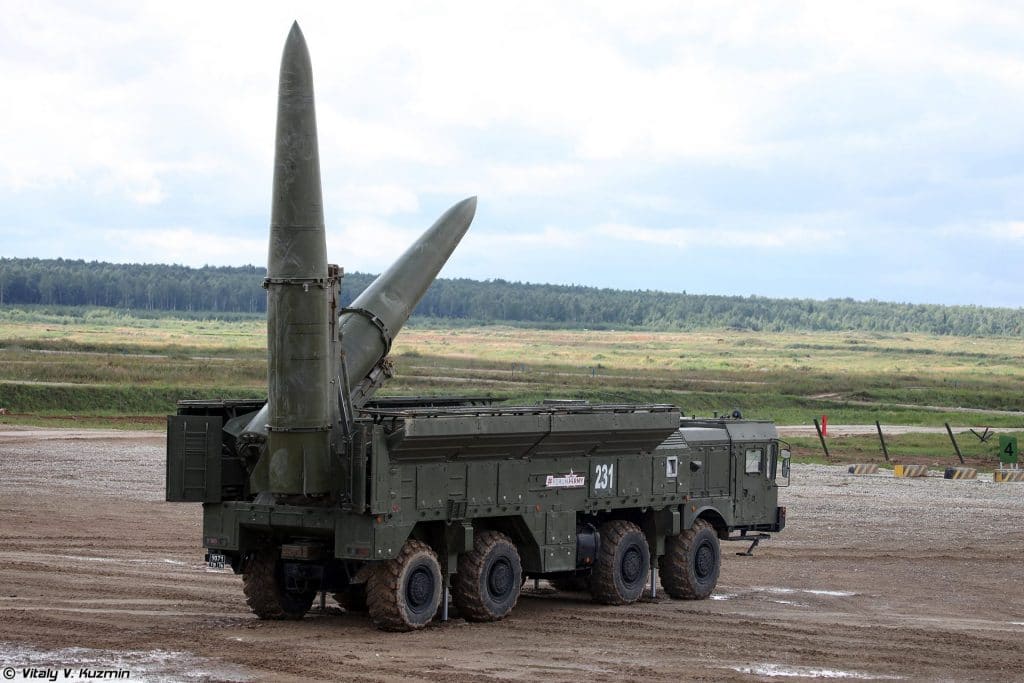
As tensions mount on Ukraine’s borders, it’s time to understand what led to the INF Treaty’s demise
Posted: 17th February 2022
By Aaron J. Berliner, Jake Hecla, Michael Bondin, Austin Mullen, Elena Osorio Camacena, Alex Droster, Dinara Ermakova, Tyler Scott Nagel, Nicole L. Nappi, Katherine J. Oosterbaan, Sarah R. Stevenson, Chelsea D. Willett, Eric F. Matthews, Manseok Lee, Karl van Bibber, Michael Nacht | February 16, 2022

Iskander-M short-range ballistic missile system with two 9M723K5 missiles, at a Russian demonstration of military technology in 2017. Photo by Vitaly Kuzmin
The escalating hostilities between the Russian Federation and Ukraine have forced many analysts to reconsider the future of the European security environment. Europe’s threat landscape has changed dramatically in the last decade. Arms control has crumbled, while an increasingly aggressive Russia has developed sizeable territorial ambitions and a prodigious appetite for risk.
These developments have resurrected nightmares of nuclear warfighting long considered a relic of the Cold War. Among the most daunting developments in any future effort to rebuild the shattered regional security environment is the demise of the Intermediate-Range Nuclear Forces (INF) Treaty, which prohibited a class of weapons considered to be highly destabilizing. Now shorn of all but the most basic arms control treaties, the continent is dotted with an unprecedented array of precision missiles while confrontation looms in the east.
https://thebulletin.org/2022/02/as-tensions-mount-on-ukraines-borders-its-time-to-understand-what-le…